Why Recycled Cotton
The textile waste crisis in the fashion industry is one of the most closely guarded secrets. With almost every textile production stage resulting in waste, the fashion industry’s waste crisis has become a global monster. Cotton is one of the most widely used cotton fabrics in clothing production, and using recycled cotton fabric is an essential step towards a cleaner, more sustainable, and less wasteful fashion industry.
Cotton is a natural fibre that is biodegradable and recyclable. However, the vast majority of cotton produced yearly is thrown away or incinerated. This is because conventional cotton production is hugely water-intensive, chemically intensive, and energy-intensive. As a result, creating recycled cotton fabric requires far less water, energy, and chemicals than producing new cotton fabric.
In addition to being more sustainable, recycled cotton fabric is often of higher quality than new organic cotton fabric. This is because recycled cotton fibers are stronger and more resilient than new fibres. As a result, garments made from recycled cotton fabric are less likely to pill, fade, or shrink over time.
The crisis of textile waste in the fashion industry is a problem that affects everyone and requires a collaborative solution. Switching to recycled cotton fabric is essential to cleaning up the fashion industry and making it more sustainable.
What is Recycled Cotton?
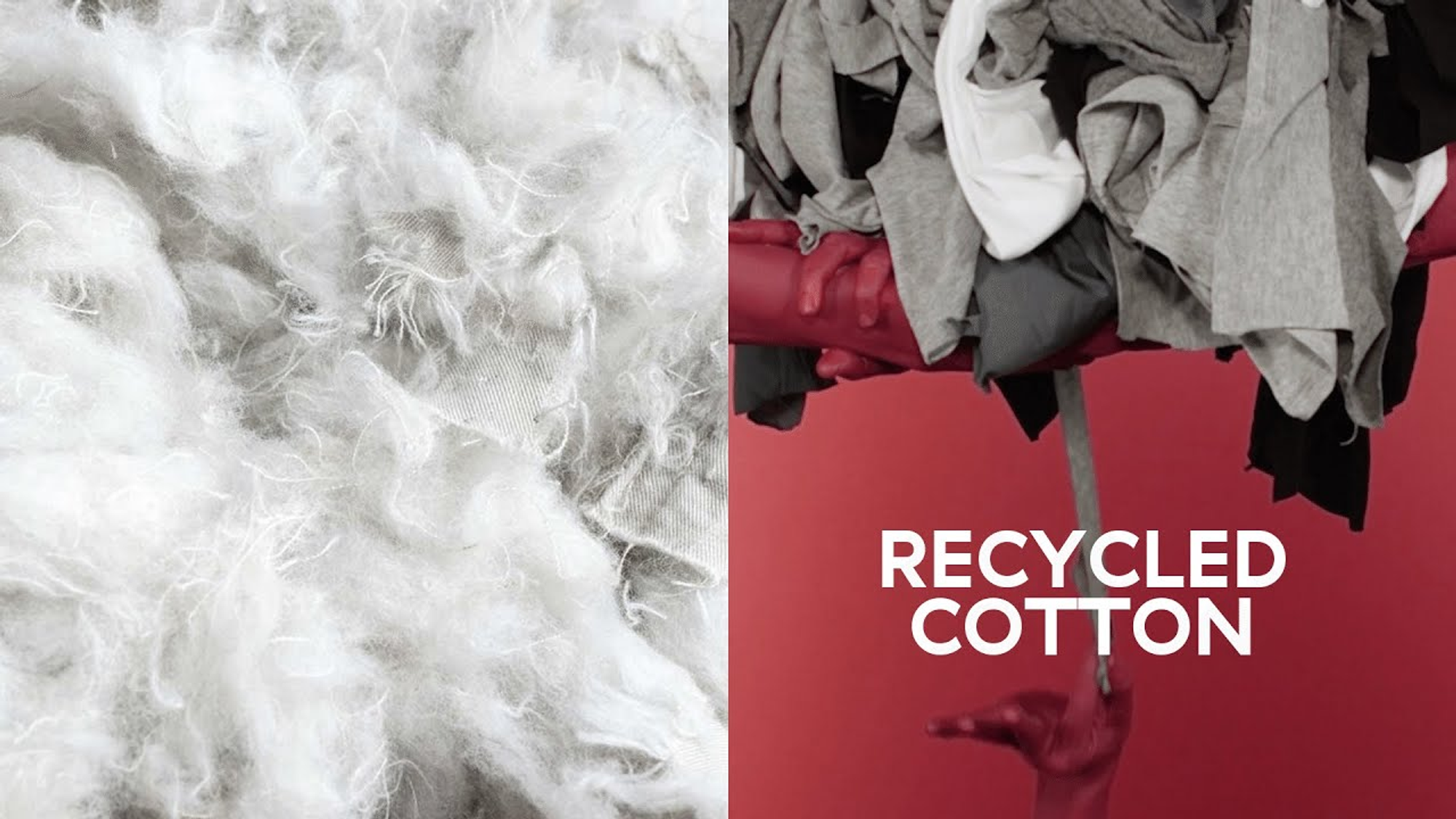
Recycled cotton is any cotton fabric collected and processed to be used again. It is also called reprocessed cotton, recycled cotton, RCF, seconds etc. It is a cotton fibers widely accepted as an excellent choice for sustainability.
An estimated 25 billion pounds of textile waste is generated annually. That’s the equivalent of about 10 million tons! And only 15% of that is actually recycled. The rest goes to landfill or incineration.
Recycled cotton comes from textile mill cutting floor waste, spin-offs, discards, trimmings, lint, denim jeans, etc. In other words, any leftover fabric from the clothing manufacturing process can be recycled into new recycled yarn or fabric.
Even though recycled cotton represents a small fraction of the total cotton market today, its popularity proliferates as people become more conscious of the need to reduce textile waste. We are slowly but surely progressing towards a circular economy in which fabrics and materials are reused and repurposed instead of being sent to landfills. And recycled cotton is playing a significant role in helping us get there.
The Source of Cotton recycling
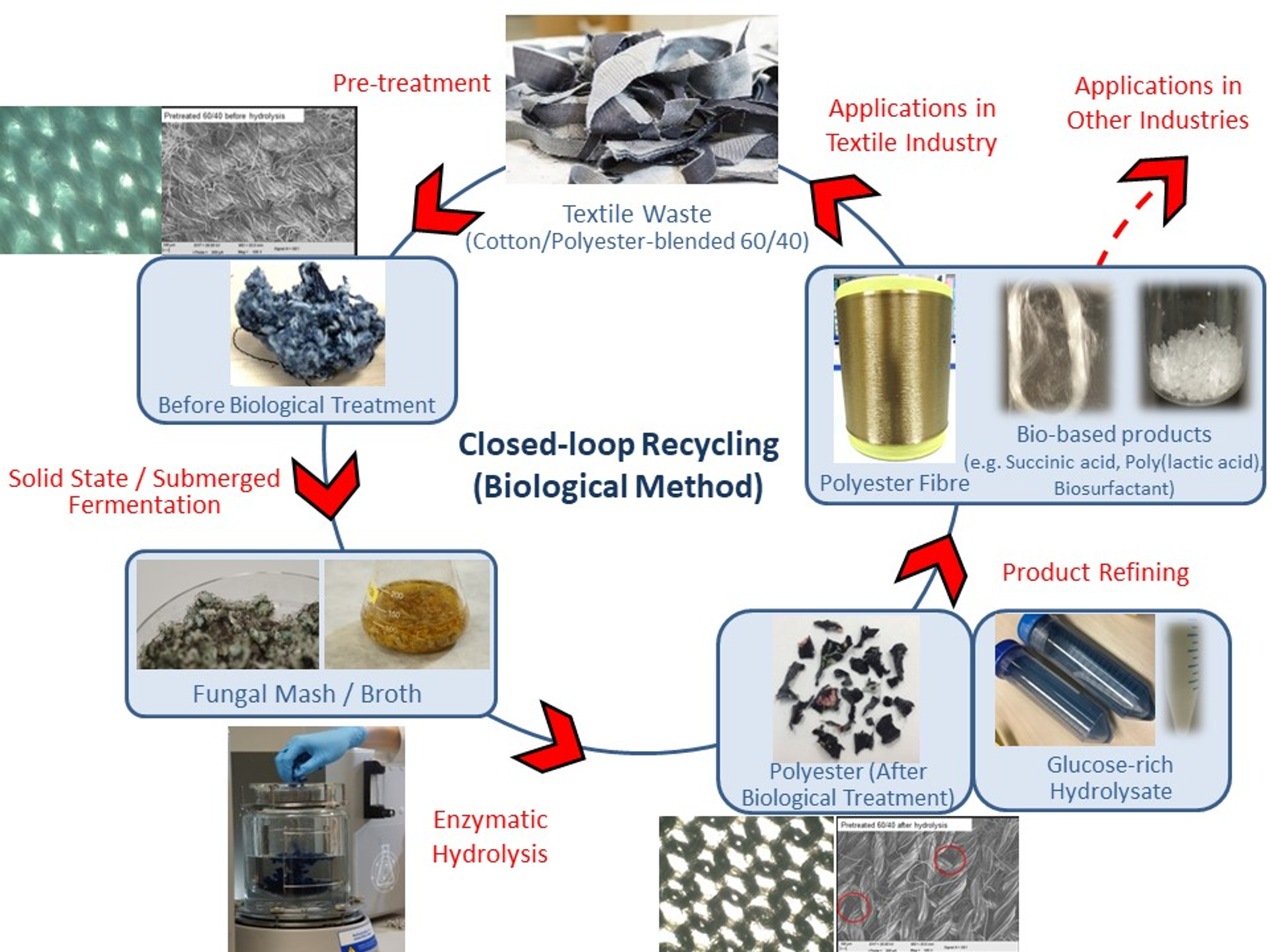
There are two primary sources of cotton recycling, pre consumer and post consumer.
Before consumption,
It is mainly recovered from producers, including
- factories,
- cotton mills,
- cotton spinning mills,
- cotton waste recycling companies.
First, the waste cotton undergoes preliminary processing (like dusting, cleaning, and grading). After that initial stage, it’s sold to cotton recycling companies or businesses that use the waste cotton for other products.
And after consumption
That is, recycling from our daily life mainly includes the following three aspects:
- recycling cotton from households,
- recycling cotton from industrial waste,
- and recycling cotton from waste sold at street stalls.
These are where recycling cotton is a part of everyday life, so we can see how some items that typically go to waste are transformed into new products.
People have recycled cotton for centuries, and attitudes toward this sustainable resource are gradually changing. Now, people are more aware of the importance of using recycled cotton.
How is recycled cotton made?
Cotton is a natural fibre that can be recycled and reused to create new textiles. The two main methods of recycling cotton are mechanical recycling and chemical recycling.
- Mechanical recycling, also known as “textile reuse,” involves breaking down conventional cotton fibers to be spun into new yarns and cotton fabrics. No chemicals or machines are necessary for this process- it can all be done by hand.
- On the other hand, chemical recycling uses chemicals to break down conventional cotton fibers into their individual cells. This cellulose can create industrially-made products like plastics, building fabrics and materials, and biofuels. While chemical recycling is a more efficient way to recycle cotton, it requires using harmful chemicals that can damage the environment.
Both mechanical and chemical recycling requires significant energy and water, producing harmful greenhouse gas emissions. As a result, recycled cotton is often less environmentally-friendly than other sustainable materials like bamboo or hemp.
Despite its environmental impact, recycled cotton is still widely used in the fashion industry due to its low cost and familiarity. Many major brands have started using recycled cotton in their garments, and the trend is likely to continue in the years ahead.
Is recycling cotton really sustainable?
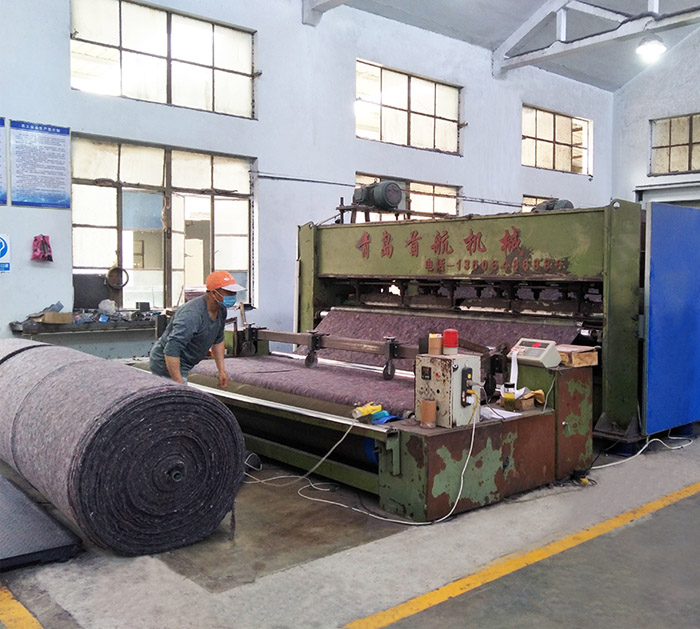
Recycling cotton clothing is more sustainable than throwing it into our landfill sites. However, it must be done with other sustainable practices to be truly effective. For instance, using recycled cotton to create new clothing requires far less energy and resources than producing virgin cotton.
It also helps to reduce pollution and greenhouse gas emissions. Furthermore, recycling cotton helps to keep clothes out of landfills, where they will release methane gas as they decompose. So, while recycling cotton is not a perfect solution, it is definitely a step toward sustainability.
Is recycling cotton ethical?
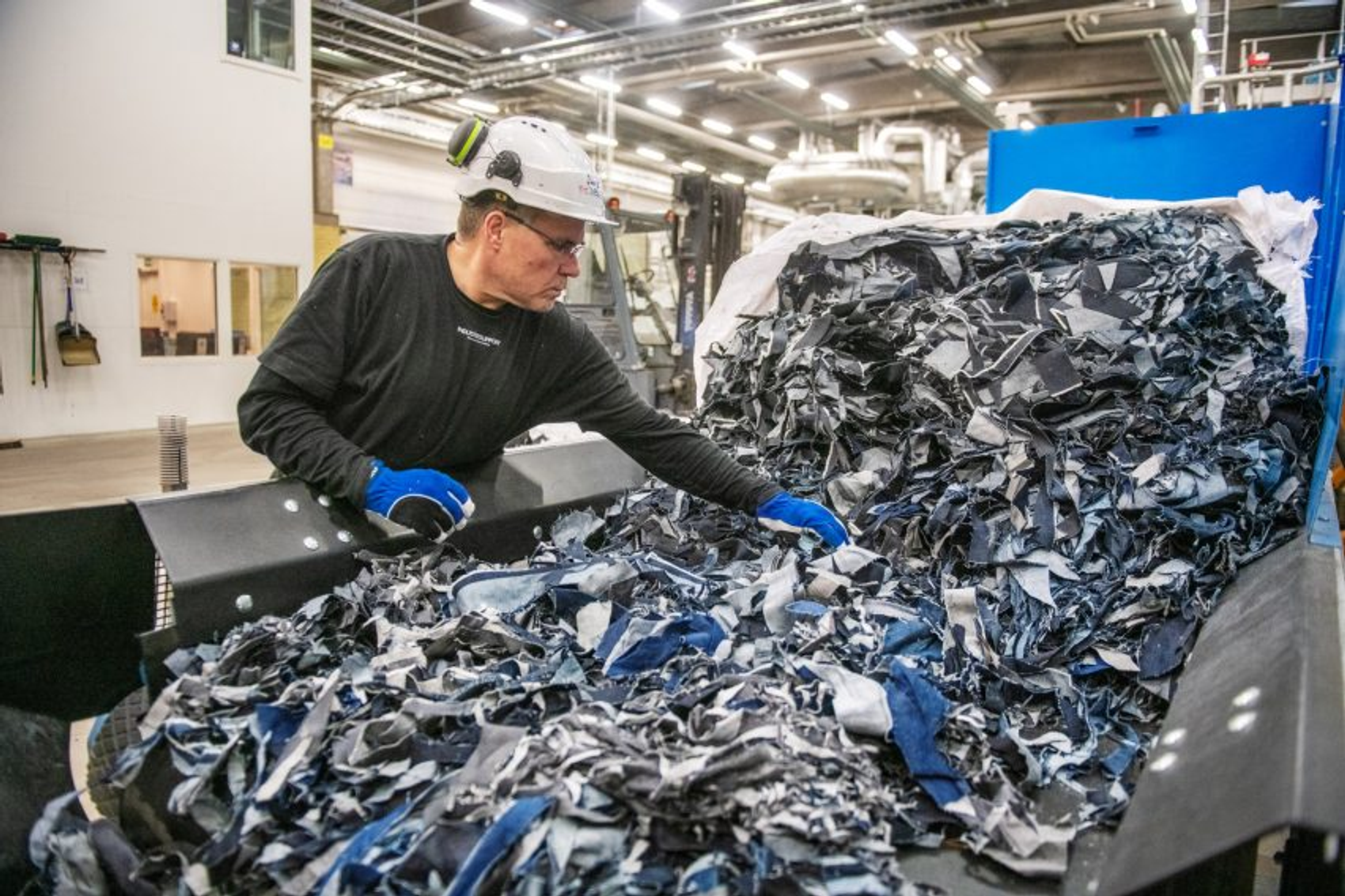
While recycling cotton may appear to be a sustainable and ethical practice on the surface, the reality is that the cotton recycling industry is rife with moral and social justice violations. Cotton is a crop that is heavily sprayed with pesticides and chemicals, which can have harmful effects on the environment and the workers who are exposed to them.
In addition, cotton is often sourced from countries with weak or nonexistent labour laws, meaning that workers are usually paid meagre wages and are not given adequate protections. As a result, recycling cotton can contribute to many of the same problems associated with the traditional cotton industry.
However, recycling can become a genuinely ethical and sustainable practice by working to ensure that cotton is sourced ethically and sustainably.
How much water can we save by using recycled cotton?
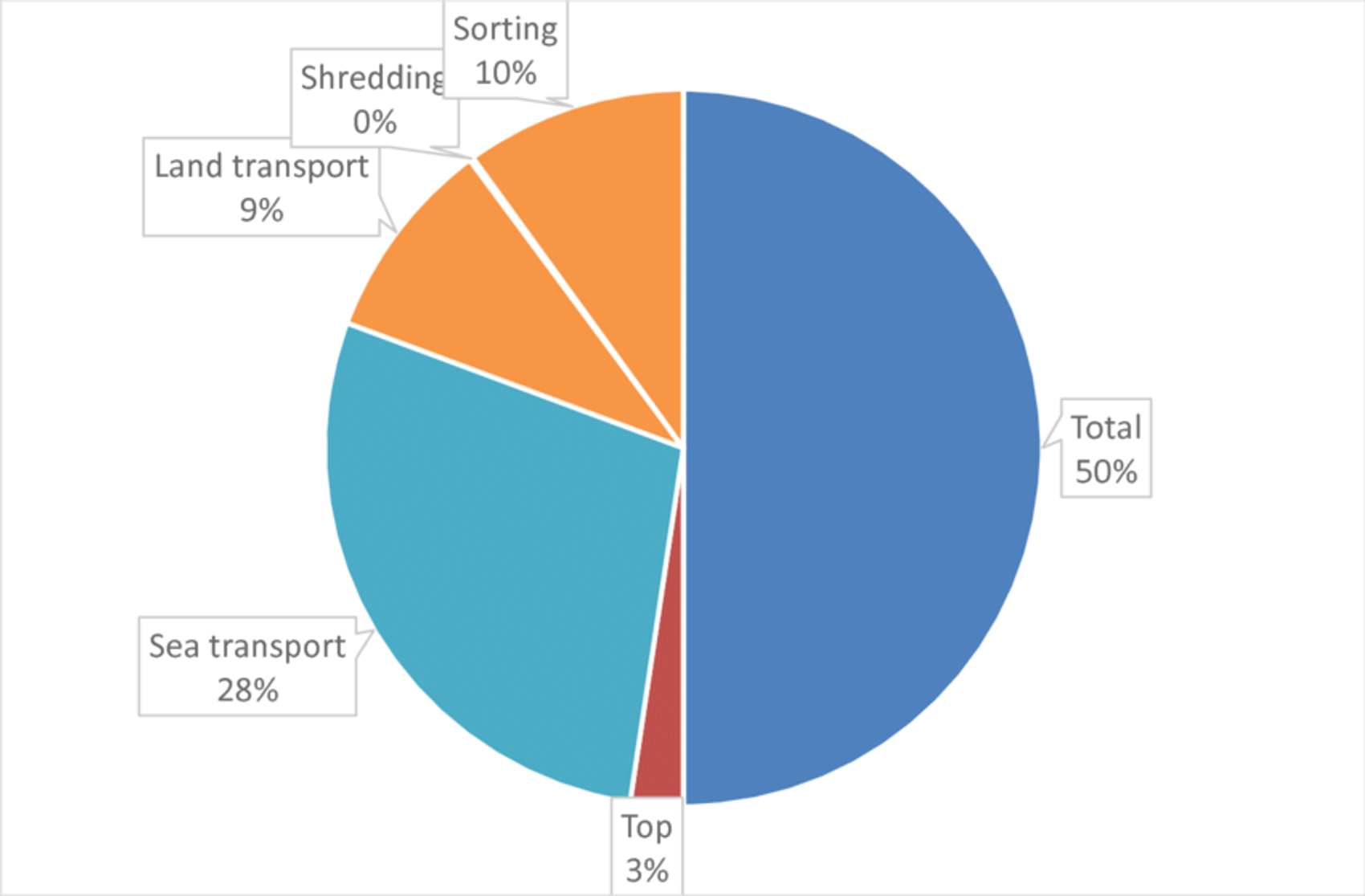
Farmers worldwide use billions of gallons of water to grow cotton every year. A typical cotton plant requires more than 2,000 gallons of water to reach maturity, and the process of developing and harvesting cotton is one of the most water-intensive crops in the world.
- However, recycled cotton requires far less water to produce. In fact, it takes about 96% less water to recycle a pound of cotton than it does to grow a new pound of the crop.
- For example, a recycled cotton t-shirt requires about 5.4 gallons of water to produce, compared to 164.9 gallons for a new one.
As a result, using recycled cotton can significantly impact water conservation. Farmers who switch to recycled cotton can save billions of gallons of water each year, significantly contributing to the global effort to conserve this vital resource.
How much do we save on clothes that will pay for the trash?
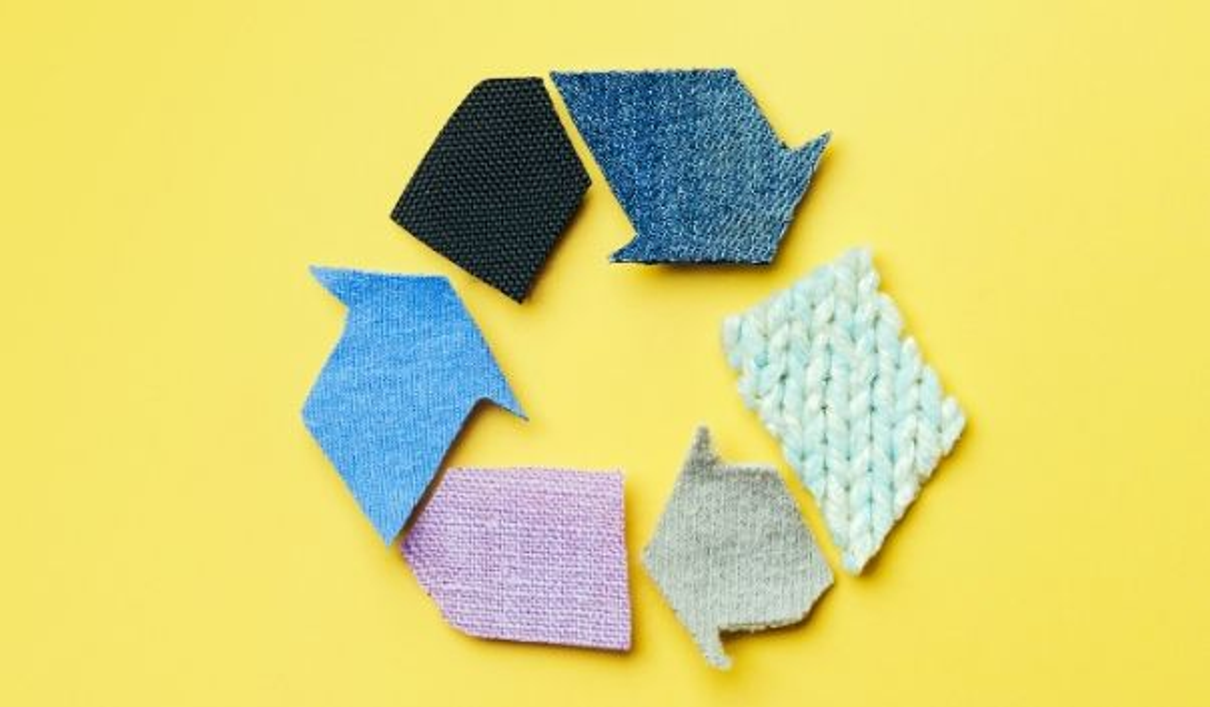
Every year, approximately 13 to 15 million tons of clothing end up in landfills. This represents nearly 85-90% of all clothing purchases made in the United States. And the problem is only getting worse. By 2030, it is estimated that 1.34 billion tons of textiles will be sent to landfills each year.
There are several reasons why so much clothing ends up in landfills. For one, fast fashion has created a culture of disposability, where people are more likely to purchase cheap, poorly made garments that they will only wear a few times before discarding. In addition, it can be difficult and expensive to recycle clothes, so many people simply don’t bother.
The good news is that there are several ways to reduce the amount of clothing waste we produce each year.
- One is to buy less fast fashion and instead invest in high quality of recycled pieces that will last for years.
- Another is to donate unwanted clothes to charity or take them to a local consignment store.
- And finally, if you have clothes that are too worn or damaged to be reused, make sure to recycle them rather than throw them away.
By making some simple changes to how we shop for and care for our clothes, we can significantly reduce the amount of textile waste in landfills each year.
People are now considering sustainability and how they can help the environment. The majority of post-consumer see recycling as one way to be sustainable.
- One-fourth of consumers are okay with spending more money on home textile fabrics and materials that can be recycled.
- According to a recent study, one-third of consumers are open to spending more on clothing items.
The cons of recycled cotton
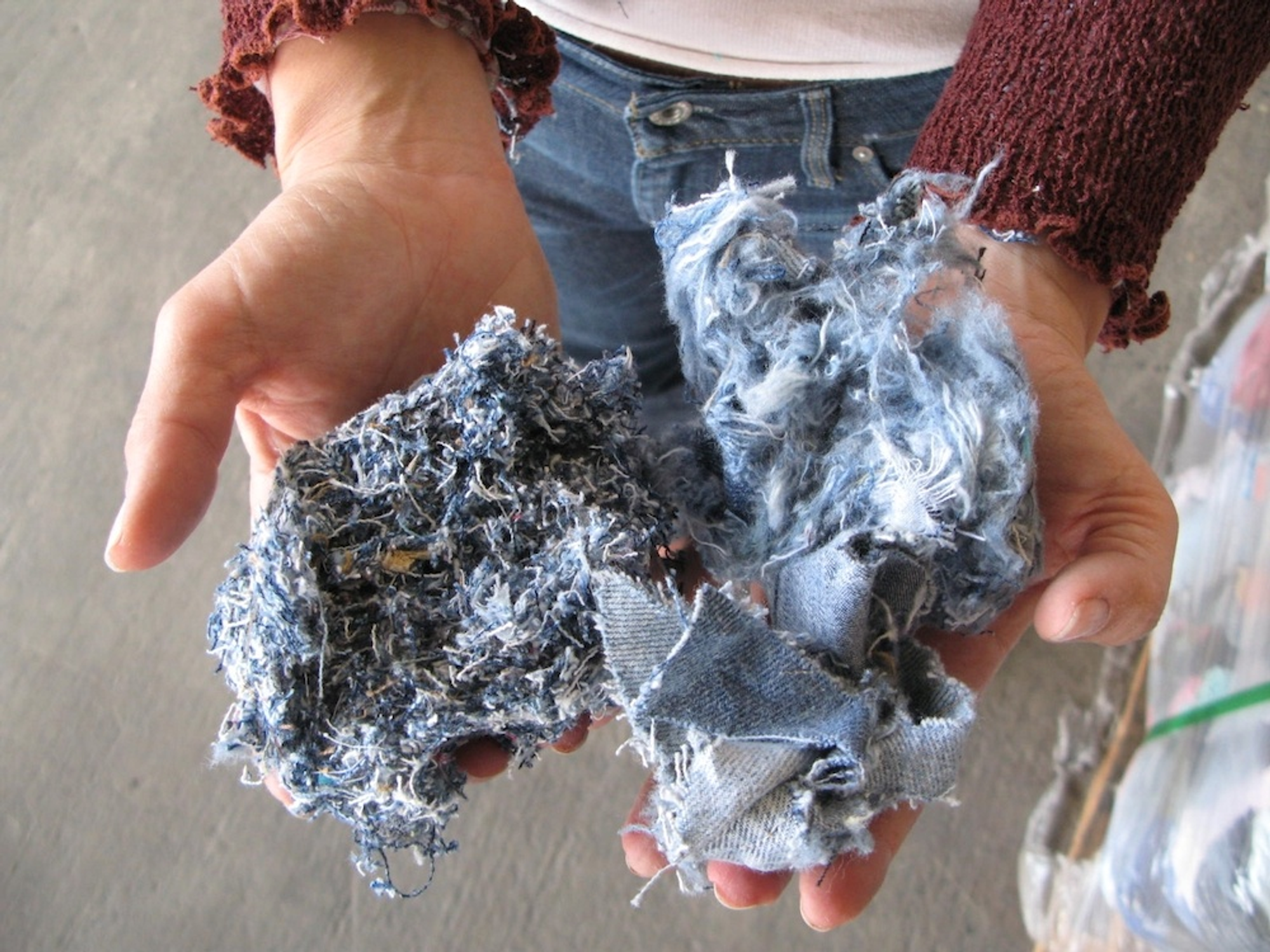
Low quality
The quality of recycled cotton is lower than that of pure cotton. Recycled cotton is often mixed with other materials, which reduces its absorbency and strength. In addition, the colour of recycled cotton may be less vibrant than pure cotton.
Difficult to separate and consume a lot of energy
Separating recycled cotton from other fabrics and materials is a complex and energy-intensive process. As a result, recycled cotton typically costs more than pure organic cotton.
The Pros: Not Perfect, But Still Good
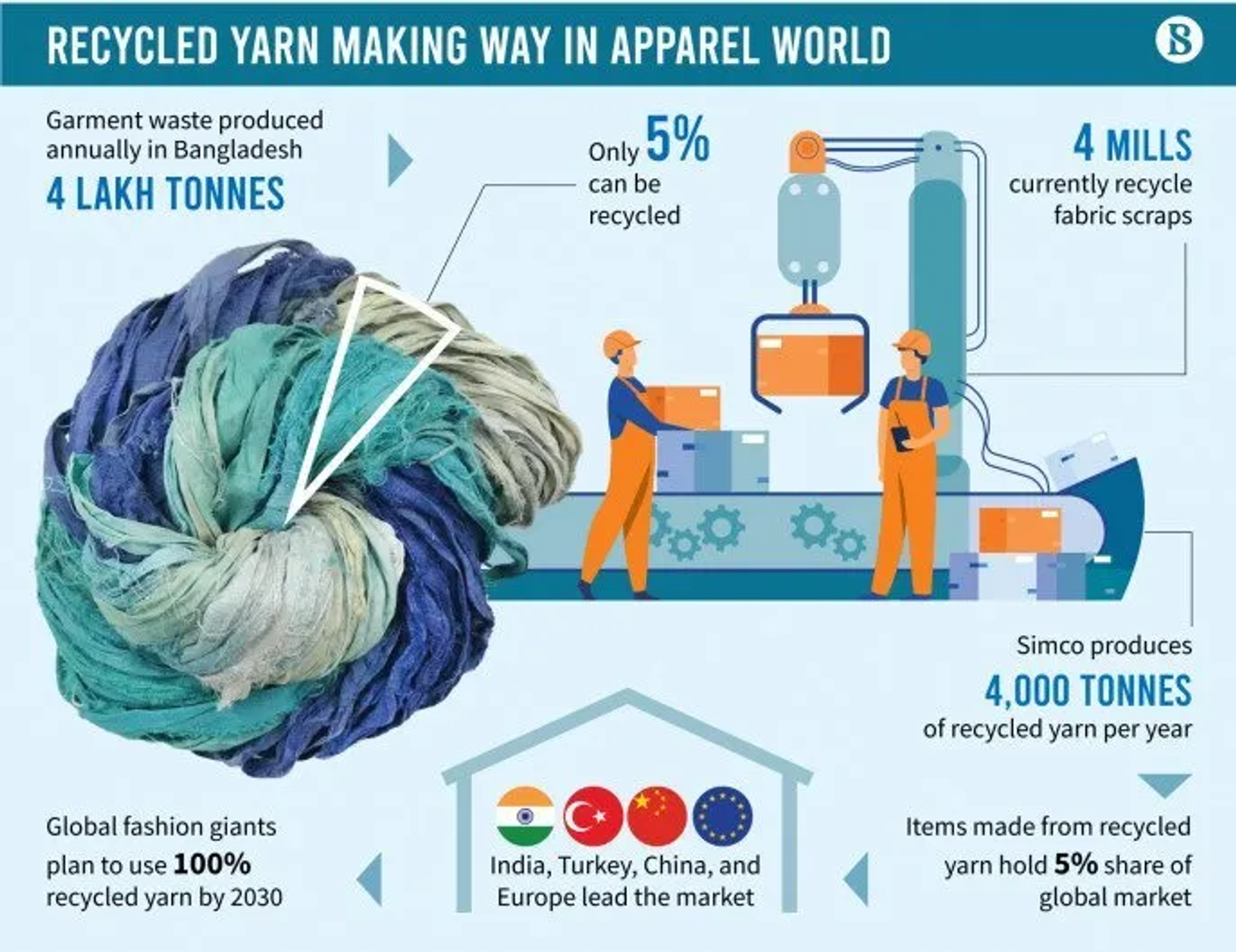
Key benefits of recycled cotton include:
Reduce carbon dioxide and other fossil fuel greenhouse gas emissions.
Recycled cotton requires less energy to produce, thus reducing the use of fossil fuels. In addition, since it reuses existing materials, it reduces the need for new resources. This means that using recycled cotton wastes less of the planet’s resources and reduces carbon dioxide emissions and other harmful substances.
Less water and cleaner cotton.
Much less water is required to produce recycled cotton than traditional chemical methods. In this way, not only can the waste of water resources be reduced, but also harmful substances can be avoided from entering the groundwater through the water body. Plus, since recycled cotton is produced using more natural methods, it’s also a cleaner, healthier sustainable option.
It helps to reduce the textile waste problem.
According to the United Nations, the global average per person produces about 7 kg of textiles per body in 24 years. Using recycled cotton can reduce the amount of textile waste going to landfills and create a more sustainable environment.
Reducing dependence on new resources
By investing in recycled cotton products, consumers support the circular economy by reducing their dependence on new resources and increasing the use of existing materials. This reduces the need for energy-intensive textile production processes and encourages companies
Positive environmental impact
When you recycle cotton, it limits the amount of garbage thrown away in incinerators and landfills. Furthermore, it also forestalls toxic substances being emitted into the air and consequently lessens atmospheric pollution.
Using recycled cotton, we can create a more sustainable environment while reducing our dependence on new resources. It also allows us to participate in the circular economy and support a cleaner and greener future.
Wrapping up
Lezhou Garment emphasizes using environmentally friendly recycled materials over traditional natural resources. We are committed to taking extra steps to ensure our products are made from sustainably sourced materials.
Do you want a supplier just as dedicated to sustainability for your fashion line? By all means, reach out to us today! We would love nothing more than to help you create fashionable and sustainable clothes that keep the planet in mind. Thankful for your support!
